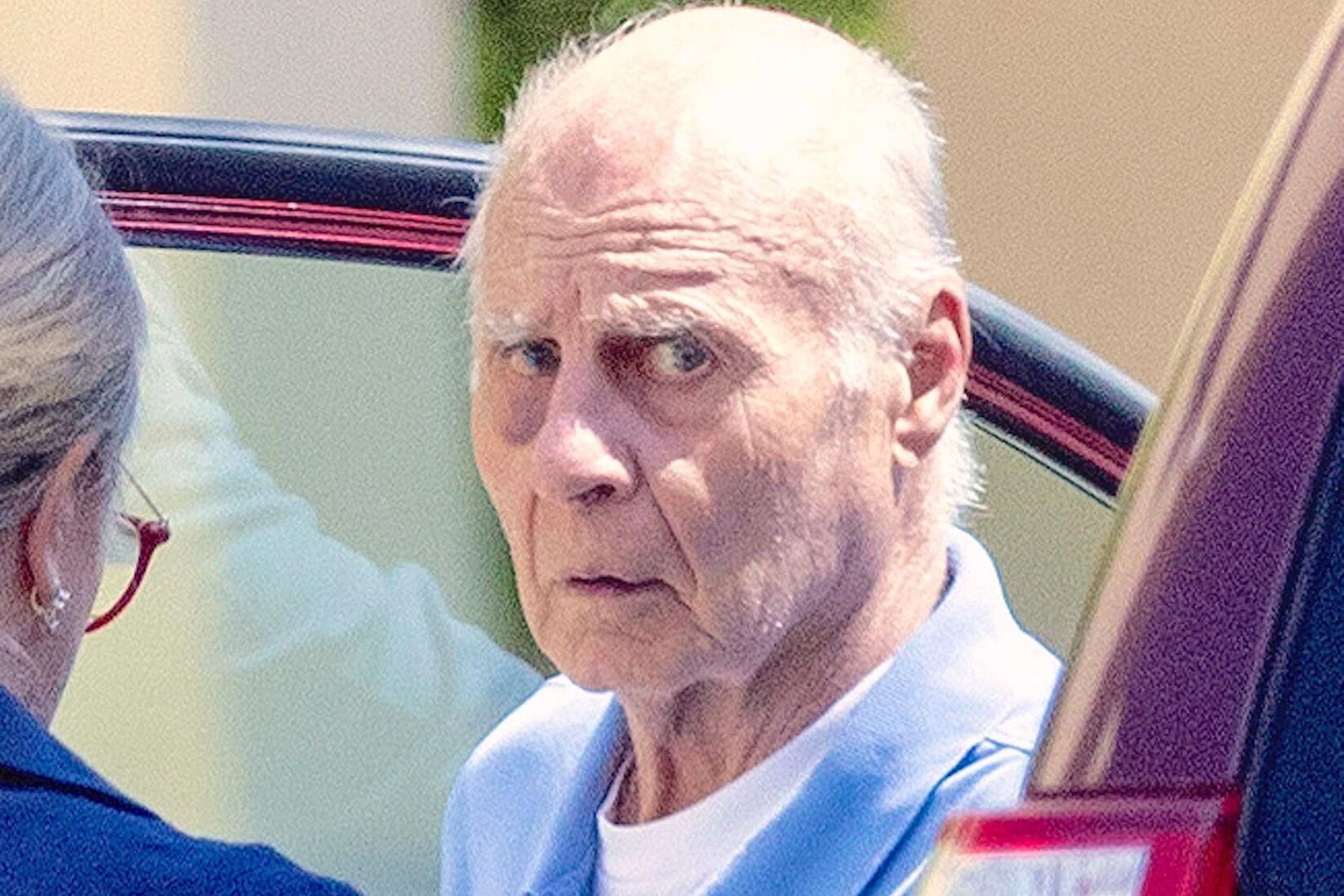
What is the Latter Rain Movement? The Latter Rain Movement, emerging after World War II, played a pivotal role in shaping modern Pentecostalism and the Charismatic movement. It emphasized supernatural gifts of the Spirit, such as healing and prophecy, and sought to restore New Testament church practices. Originating in Saskatchewan, Canada, the movement was marked by miraculous phenomena and a strong anti-denominational stance. Influenced by figures like William Branham, it promoted relational networks over rigid structures. Despite facing controversy and accusations of heresy, its legacy continues to impact Christian worship and theology globally. Let's delve into 20 key facts about this influential movement.
Origins and Early Days
The Latter Rain Movement emerged in the aftermath of World War II, a period marked by spiritual seeking and anxiety. This movement, although controversial, left a lasting impact on Pentecostalism and the Charismatic movement.
-
The name "Latter Rain Movement" was coined by its opponents, not by its participants. Critics suggested it had cultic and offbeat spirituality, but its teachings are accepted by millions of Pentecostals and Charismatics worldwide.
-
The movement began post-World War II, a time when people sought hope and security. The trauma of the war led many to seek solace in the gospel.
-
The first major revivals occurred between 1948 and 1952, primarily in Saskatchewan, Canada. These revivals were marked by reports of healings and other miraculous phenomena.
Influential Figures and Key Events
Several key figures and events played pivotal roles in shaping the Latter Rain Movement. Their contributions and actions helped define the movement's direction and influence.
-
William Branham, a prominent healing evangelist, heavily influenced the movement. His 1947 Healing Revival in Vancouver inspired leaders at the Sharon Schools in North Battleford, Saskatchewan, to seek more outpourings of the Holy Spirit.
-
In October 1947, faculty and students from the Bethel Bible Institute moved to North Battleford, establishing Sharon Children’s Homes and Schools. This move was crucial for the Latter Rain Revival.
-
Key leaders included George Hawtin, Ernest Hawtin, Percy Hunt, and Milford Kirkpatrick. Rev. Herrick Holt, a pastor from the Foursquare Church, also played a significant role in the early stages of the revival.
Core Beliefs and Practices
The Latter Rain Movement had distinct beliefs and practices that set it apart from other religious movements of its time. These core tenets shaped its identity and influence.
-
The movement emphasized relational networks over organizational structure. This approach fostered a sense of community and cooperation among its followers.
-
It had a strong anti-denominational stance, advocating for locally autonomous, apostolically overseen, and elder-led congregations. This stance was influenced by Scandinavian-American Pentecostal groups.
-
The teachings developed into a "Restorationist" theology, aiming to restore the New Testament church pattern before Jesus Christ's return. This theology brought fresh faith to millions of believers worldwide.
Miraculous Phenomena and Eschatology
Miraculous events and eschatological beliefs were central to the Latter Rain Movement. These aspects drew many followers and shaped the movement's message.
-
The movement was characterized by numerous reports of healings and other miraculous phenomena. These events were seen as evidence of the Holy Spirit's power.
-
The theology placed the ministry of the Spirit in the context of God’s end-time purposes. It emphasized the restoration of New Testament church life and the preparation of believers for Christ's Second Coming.
Global Impact and Controversies
Despite its initial small-scale impact, the Latter Rain Movement had far-reaching consequences. It influenced various Christian movements and faced significant controversies.
-
The movement's effects were felt worldwide, becoming a catalyst for the Charismatic movement of the 1960s and 1970s and the burgeoning apostolic churches of the 1980s through to the 21st century.
-
Its teachings and practices slowly dissolved into parts of the larger Charismatic movement. Many Charismatic churches and leaders were influenced by its doctrines.
-
The Assemblies of God officially denounced the Latter Rain Movement in 1949, nearly splitting the denomination. Other established Pentecostal groups also passed similar resolutions due to concerns over aberrant teachings.
Controversial Doctrines and Interpretations
The Latter Rain Movement faced criticism for some of its teachings and interpretations. These controversial aspects led to significant debates within the Christian community.
-
Some leaders taught heretical doctrines such as the "manifest sons of God". This doctrine posits that a special group of "overcomers" would receive spiritual bodies and become immortal, which many Christian denominations consider aberrant.
-
The movement employed a highly typological hermeneutic, interpreting the Bible in a symbolic and stylized manner. This approach emphasized extra-biblical revelation, including personal prophecies and experiences.
Role of Women and Worship Practices
The Latter Rain Movement had progressive views on women's roles and worship practices. These aspects set it apart from many traditional Christian denominations.
-
The movement emphasized the full and equal ministry role of women in the Church. This was a significant departure from traditional patriarchal structures within many Christian denominations.
-
It believed that praise and worship would usher God into believers' presence. This emphasis on corporate worship was a key aspect of the revival's practices.
Healing and Legacy
Healing and the movement's lasting legacy are crucial aspects of the Latter Rain Movement. These elements continue to influence modern Christian practices and beliefs.
-
Divine healing was another central doctrine. It taught that Christians could be healed through the laying on of hands, seen as a manifestation of the Holy Spirit's power.
-
Despite initial controversy, the theology continues to influence modern Christian movements. The Brownsville/Pensacola Revival, the Toronto Blessing, and the "holy laughter" phenomenon are all direct results of its teachings.
Lasting Impact of the Latter Rain Movement
The Latter Rain Movement left a significant mark on Pentecostalism and the Charismatic movement. Emerging post-World War II, it brought a fresh wave of spiritual revival and emphasized the supernatural gifts of the Spirit. Key figures like William Branham and the leaders of the Sharon Schools in Saskatchewan played pivotal roles. Despite facing controversy and being denounced by groups like the Assemblies of God, the movement's teachings on healing, prophecy, and apostolic leadership influenced many. Its anti-denominational stance and focus on relational networks fostered a sense of community. The legacy of the Latter Rain Movement can be seen in modern revivals like the Toronto Blessing and the Brownsville Revival. Its impact continues to shape Christian practices and beliefs, making it a noteworthy chapter in the history of modern Christianity.
Was this page helpful?
Our commitment to delivering trustworthy and engaging content is at the heart of what we do. Each fact on our site is contributed by real users like you, bringing a wealth of diverse insights and information. To ensure the highest standards of accuracy and reliability, our dedicated editors meticulously review each submission. This process guarantees that the facts we share are not only fascinating but also credible. Trust in our commitment to quality and authenticity as you explore and learn with us.


